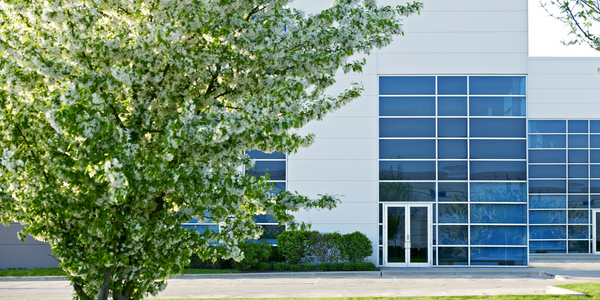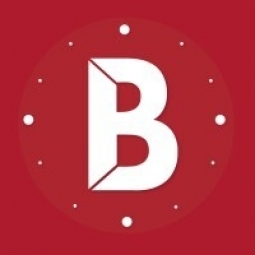Technology Category
- Cybersecurity & Privacy - Security Compliance
Applicable Industries
- Cement
Applicable Functions
- Quality Assurance
Use Cases
- Leasing Finance Automation
- Time Sensitive Networking
About The Customer
Romantic Castles of Ireland is a unique collection of luxury castles located in different corners of Ireland. Owned and operated by the renowned Corscaddens family, the collection is the largest independent and privately-owned group of luxury castles in the country. The company prides itself on offering guests a rich Irish history and a true Irish Castle experience, combining old-world elegance with modern-day comforts. Each castle operates relatively independently to provide the most personalized, white-glove service to guests. Despite the operational challenges they faced, the company maintained a thriving business and received great reviews from guests.
The Challenge
Romantic Castles of Ireland, a collection of luxury castles owned by the Corscaddens family, faced significant operational challenges. Despite their commitment to providing a unique, high-quality guest experience, the company struggled with back-office, scheduling, attendance, and reporting issues. Each castle operated relatively independently, leading to inconsistencies in administrative processes. The Operations Manager at Markree Castle, for example, relied on Excel for creating schedules, with each Head of Department (HOD) developing schedules in their own style. This lack of standardization resulted in unclear labor costs for each department. Additionally, time and attendance were tracked manually via timesheets, a process that was not only time-consuming but also lacked compliance-proofing. The company had no clear understanding of their labor-sales percentage by department. These challenges extended to all the castles, with each manager using different processes, making it difficult to benchmark and report using the same data.
The Solution
Romantic Castles of Ireland implemented Bizimply, a workforce management solution, to address their operational challenges. The solution was first introduced at Markree Castle and then rolled out across the group. The implementation led to immediate improvements in three key areas. Firstly, Bizimply's simple, color-coded drag-and-drop system replaced Excel spreadsheets for scheduling. This system instantly calculated labor costs by department as schedules were created, saving managers significant time each week. Secondly, Bizimply improved compliance. The old biometric machines, which were often faulty and unsuitable for kitchen staff with wet hands, were replaced. Manual timesheets, which were prone to errors and time-consuming for the finance department to process, were also eliminated. With Bizimply, Romantic Castles could prove compliance with labor laws and reduce employee queries about payroll. Lastly, Bizimply enhanced reporting. The same dashboard could be used for costs, sales, and wage percentage by department and by day, saving significant admin time and making data accessible from anywhere.
Operational Impact
Quantitative Benefit

Case Study missing?
Start adding your own!
Register with your work email and create a new case study profile for your business.
Related Case Studies.

Case Study
System 800xA at Indian Cement Plants
Chettinad Cement recognized that further efficiencies could be achieved in its cement manufacturing process. It looked to investing in comprehensive operational and control technologies to manage and derive productivity and energy efficiency gains from the assets on Line 2, their second plant in India.

Case Study
Digital Transformation of Atlanta Grout & Tile: An IoT Case Study
Atlanta Grout & Tile, a Tile, Stone & Grout restoration company based in Woodstock, Georgia, was facing challenges with its traditional business model. Despite steady growth over the years, the company was falling behind the web revolution and missing out on the opportunity to tap into a new consumer base. They were using independent software from different vendors for each of their department information and workforce management. This resulted in a lot of manual work on excel and the need to export/import data between different systems. This not only increased overhead costs but also slowed down their response to clients. The company also had to prepare numerous reports manually and lacked access to customer trends for effective business decision-making.

Case Study
Revolutionizing Construction Equipment Rental: A Case Study on ProsRent and ENO8
ProsRent, a startup that won the 'Best Financial Opportunity' and 'Best Pitch' at CodeLaunch 2016, aimed to revolutionize the way construction professionals source and rent heavy equipment. In the construction industry, project managers and contractors typically rent heavy equipment from supply companies. However, predicting inventory can be challenging, and finding the required equipment at the right time and place can be a hassle. If the preferred vendor doesn't have the required equipment, it results in wasted time and money in searching for it, often leading to higher costs due to non-preferred rates and increased delivery costs if the vendor is located far from the job site. Suppliers, on the other hand, desired access to a wider base of trusted renters that they didn't have to vet themselves and wanted to offer dynamic rental pricing based on demand and availability in their market. ProsRent's challenge was to produce a minimum viable product that was fast and first to market but also strong enough to engender loyalty and repeat business from the target market.

Case Study
AI-based Automation for Commercial Office HVAC: A Verdigris Case Study
Modern buildings are required to run longer hours, support a variety of end uses, and contribute to higher levels of economic productivity, leaving a thin margin for error. However, even the most advanced building and environmental control systems have failed to adequately support facilities and operations management. Buildings are often inefficient and the people using them are underserved. To meet occupant comfort and maintain cost and energy efficiency, a dynamic, AI-assisted approach is needed.

Case Study
Revamping EE's Legacy ERP: A Case Study on BT's Strategic Transformation
EE, even after its merger with BT, was operating its ERP estate on legacy infrastructure, hosted on the premises of a third-party supplier. This outdated system resulted in a volume-based operational model, higher time to market, longer delivery cycles, and unsatisfactory customer experience. BT recognized the need for a strategic transformation of these aging ERP systems and sought a partner who could proactively manage application services. The partner was also expected to handle development requirements associated with application management services, drive accountability, and ownership with a time and target-driven transformation of these services. BT's primary goals were to improve customer experience, reduce cycle time, and measure these improvements with precision.








